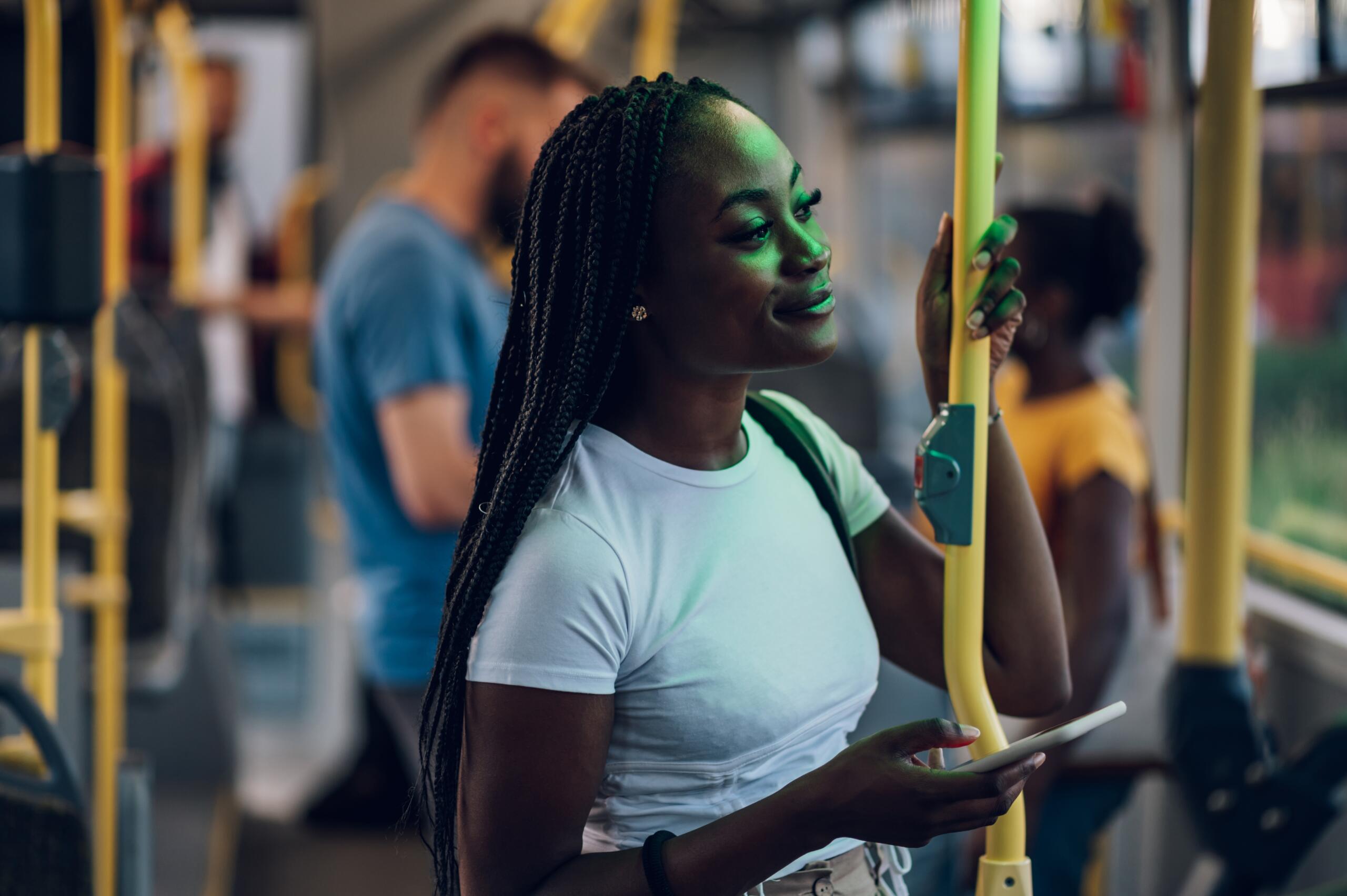City of Men, City of Women
Cities, whether by chance or choice, often contribute to gender disparities. The city, and thus, its mobility, becomes the ground on which to negotiate the pulls between public and private values, with traditional notions of masculinity and feminism fuelling patriarchal norms. What are cities doing around the world, and how can we ignite change? Join us as we decode the complexities of the gendered city.
To listen to the recording of the article below, please accept all cookies.
Cities are anything but neutral landscapes; they are intricate ecosystems that, among other things, mirror and sustain the diverse disparities present at different levels of everyday life. Women from diverse backgrounds face a myriad of challenges, from safety concerns to missed opportunities. Moreover, as Sara Candiracci, Associate Director at Arup, explains:
‘When cities are largely designed without considering the diverse needs and insights of women of all ages and identities, it restricts their opportunities and negatively impacts the overall sustainable development of societies.’

Sara Candiracci, Associate Director, Arup
Indeed, cities usually fall short in catering to women's needs, leaving billions underserved and at-risk. These urban shortcomings deepen gender disparities, placing women in situations men rarely encounter.
To fully decode the gendered city, we must recognize how traditional masculinity influences urban life, restricting access to public spaces for women and gender-nonconforming individuals.
A good start? Understanding the notion of ‘masculinities’, as explained by Romit Chowdhury, Senior lecturer in Sociology at the Erasmus University College in Rotterdam and author of ‘City of Men: Masculinities and Everyday Morality on Public Transport’:
‘Masculinities’ are those practices and speech acts through which people of all genders signify maleness. Much of what men do in the urban outdoors is related to what is expected from them as men in the private domain; men’s morality sustains the patriarchal city.’
The (gender) mobility gap
Despite the common belief that mobility is gender-neutral and benefits everyone equally, the reality is far more complex. Transport is not exempt from the gender disparities ingrained in our society; it is fuelled by the same outdated notions, morals, and practices that perpetuate inequality.

Romit Chowdhury, Senior Lecturer in Sociology, Erasmus University College
‘Mobility continues to be associated with men and masculinity while being place-bound is seen as a feminine attribute. This association is itself closely connected to publicness being related to men and the private domain being linked to women. Hence, women’s mobility and presence in the public are seen as an anomaly,’ continues Romit Chowdhury.
Women and men navigate transport differently, with distinct needs, expectations, and challenges. Women often juggle more intricate travel patterns, marked by multitasking and caregiving responsibilities. Safety is a top concern globally, and, as Sara Candiracci explains:
‘Globally, personal safety is the most widespread concern for women when travelling. Women worry about their safety when travelling alone, at night, waiting in or moving through empty or isolated locations and in poorly lit or overcrowded transport spaces.’
Public transport creates a distinct landscape for understanding gender-based violence and harassment on a global scale. This issue is intertwined with diverse local perceptions of masculinity and femininity, deeply rooted in the cultural fabric of each nation, shaping the way people interact during their journeys. For instance, Romit Chowdhury sheds light on Japan and India, two countries he has extensively researched:
‘Cultural ideas about good Japanese femininity make it difficult for them to protest when they face sexual assault on commuter trains. In Indian cities, conservative notions of the good Indian woman conditions respectability; those women who are seen by men as deserving of protection will be guarded; while those who go against societal expectations will be confronted with male rage.’
A glocal perspective
While gender equality remains an elusive goal worldwide, cities and citizens around the world are pushing for change via different initiatives. On Tokyo’s commuter trains, Romit Chowdhury mentions:
‘There is a growing trend among younger men to markedly hold on to the railings above with both hands while standing next to women; the idea is to signal to women that they have no intention of groping them. Women passengers notice these signs and allow themselves to relax.’
Also in Japan, where women face a higher risk of railway suicides, 11 train stations introduced calming blue lighting, resulting in an 84% decrease in suicides between 2000 and 2010. This innovative 'nudge technique' not only saved lives but also made cities more welcoming for women, highlighting the power of simple interventions.
 In Europe, Vienna has been a trailblazer in 'gender mainstreaming' for almost three decades. Back in 1992, Vienna's Aspern neighbourhood was meticulously designed around women's needs. These principles are now ingrained in policy, backed by penalties for non-compliance. Now, other cities like Berlin, Barcelona, and Copenhagen are taking notes and starting to integrate gender mainstreaming into their urban planning, inspired by Vienna's success.
In Europe, Vienna has been a trailblazer in 'gender mainstreaming' for almost three decades. Back in 1992, Vienna's Aspern neighbourhood was meticulously designed around women's needs. These principles are now ingrained in policy, backed by penalties for non-compliance. Now, other cities like Berlin, Barcelona, and Copenhagen are taking notes and starting to integrate gender mainstreaming into their urban planning, inspired by Vienna's success.
However, gender data gaps in transport act as roadblocks to effective, targeted solutions. Biased designs, shaped by male-dominated leadership, disproportionately impact women. This inequity calls for research investment, illuminating the daily challenges women encounter. Diverse perspectives and enriched, gender-focused data are crucial assets for the future of travel behaviour. In Ireland, Sara Candiracci explains:
‘We (Arup) undertook a study commissioned by Transport Infrastructure Ireland (Travelling in a Woman’s Shoes); it helps identify the patterns, constraints and issues associated with women’s mobility and the resultant social, societal, and economic repercussions of gender bias within the transport system.’
Time to act!
The goal is clear: create inclusive spaces where everyone can thrive, regardless of gender. To do this, we need to broaden the conversation and follow a holistic approach. Sara Candiracci says:
‘The focus of interventions or debates on gender equity is normally on women’s safety; this is extremely important, but it needs to be considered along with other topics to enhance their opportunities to thrive in life.’
Romit Chowdhury further adds: ‘Safety is a tricky issue; it is often a form of protectionism. We need to talk about freedom! To do this, the role of pedagogy and the space of the classroom in inspiring progressive social change need to be enhanced.’
 To create thriving, inclusive cities, we must prioritize accessible mobility, inclusive public spaces, and women's leadership. Men's support in empowering women is essential for success.
To create thriving, inclusive cities, we must prioritize accessible mobility, inclusive public spaces, and women's leadership. Men's support in empowering women is essential for success.
As we navigate the gendered city, remember: collaboration, knowledge exchange, and inclusivity are our main tools. Break down barriers and weave gender responsiveness into city planning; together, we can create cities where every single voice matters.
Click here to read the article in its original format.
About the contributors:
Marina Martin Vilches is a Project and Communications Officer and the SMC Platform Manager at POLIS Network. Specialised in urban governance, she currently provides support for POLIS’ corporate communications with a focus on social media and works on electromobility projects. She is passionate about active travel, inclusive mobility, and innovative governance approaches.
Romit Chowdhury is a Senior Lecturer in Sociology at Erasmus University College in Rotterdam. He is also the author of ‘City of Men: Masculinities and Everyday Morality on Public Transport.’
Sara Candiracci is an Associate Director in Arup's Cities, Planning and Design team in Milan, and the Global Leader for Social Value and Equity. With more than two decades of experience as an urban planner, researcher, and international development expert, Sara has been at the forefront of designing and leading projects and programs focused on creating more equitable, inclusive, healthy and resilient cities.
